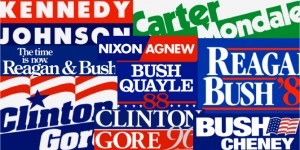It’s that time again – the polls are open and general election voting is underway.
Over the last several months, we’ve witnessed political commercials plastered with moral and ethical advertisements – each with a platform, message and agenda. Politicians and their campaigns are a close relative to any brand seeking to make a connection with a consumer. And, brands outside the election can learn a lot from the branding strategy used by the elected winner.
The earlier a candidate can drive their positioning and brand expression into voters’ minds, the more power they will have to win your vote. Political candidates, who want to be successful in building a campaign brand, should focus on creating good content online, use social media to promote themselves and build strong support in their communities.
Throughout history, candidates’ campaign strategies have continued to evolve, keeping up with changing media platforms, the impulses of their audience and the election process. Even before Reagan campaigned with bumper stickers and Obama tweeted, as early as the 1960 election between Nixon and Kennedy, politicians began to realize that a candidate’s brand hinged on more than ideologies and logos.
For decades, simple, bold wordmarks were the cornerstone for candidates’ brand messaging. And, they all looked the same – navy and red color palettes, stars and stripes icons, sans serif typography, etc. While we know logos aren’t new in political campaign branding, consistent communications is – the power of a political brand is in the overall experience that now includes a range of media channels.
Regardless of personal politics, a holistic branding campaign and strategy is important to winning any election. So, when you cast your vote for a candidate today, remember that you’re not just voting for their policies or party affiliation, rather you are choosing to affiliate with their personality, attitude, appearance and beliefs – in essence, their brand.


